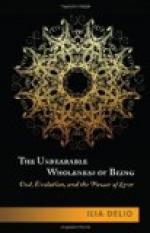Before the eleventh century poetry in the true sense of the word did not exist. There were only Latin Church hymns and legends, perverted reminiscences of antiquity, and, in the vulgar tongue, legends of the saints and simple dancing-songs for the amusement of the lower classes. Thanks to the relentless war which the clergy waged against them, a few only have been preserved. There can be no doubt that Provence was the birthplace of European poetry. The “sweet language” of Provence was the first to reach perfection and perfect maturity. It drove the language of the German conquerors eastwards and prepared the ground for the French tongue.
The beginning of the twelfth century saw the birth of the poetry of the troubadours, which possessed from the first in great perfection everything that distinguishes modern lyric poetry from the antique. Instead of the syllable-measuring quantity, we now have the emphasising accent; the rhyme, one of the most important lyrical contrivances—and in its near approach to music the most striking characteristic of modern lyrical poetry as compared with the antique—reaches perfection together with the complete, evenly-recurring verse which is still to-day peculiar to lyrical art. The poems of many of the troubadours pulsate with passionate life, and bear no trace of the traditional or the conventional. The martial songs of Bertrand de Born stride along with a rhythm reminiscent of the clanking of iron. I quote the first verse of one of these:
Le coms m’a mandat
e mogut
Per N’Arramon
Luc d’Esparro,
Qu’eu fassa per
lui tal chanso,
On sian trenchat mil
escut,
Elm e ausberc e alcoto
E perponh faussat e
romput.
The count he sent to
me one day
Sir Arramon Luc d’Esparro;
A song I was to make
him—so
That thousand shields
with ring and stay
And mail and armour
of the foe
To fragments shivered
in dismay.
The poetry of the Provencal troubadours had already passed its prime when, in the other European countries, lyric art was still in its infancy. The crusade against the Albigenses (1209), undertaken by Gregory VII. with the object of killing the new spirit and the new secular civilisation, drove many troubadours to Italy, among others the famous Sordello, who is mentioned in Dante’s Divine Comedy. Others went to Sicily, to the court of the art-loving Emperor, Frederick II., where a distinct, but not very original, poetic art arose. In Italy the perfection of mediaeval poetry was reached in the “sweet, new style” immortalised by Dante. But not only the great Italians, the trouveres from the North of France also, and—to some extent—the German minnesingers, were influenced by the art, and above all, the ideals which had originated in Provence. The poetry of the earliest Rhenish and Austrian minnesingers closely follows German folklore, and the songs of Dietmar of Aist and others are still quite innocent of any trace of neo-Latin characteristics. But very soon the technical perfection of the Provencal poetry and the Provencal ideal of courtesy and love, famous all over Europe, strongly influenced the German mind.




